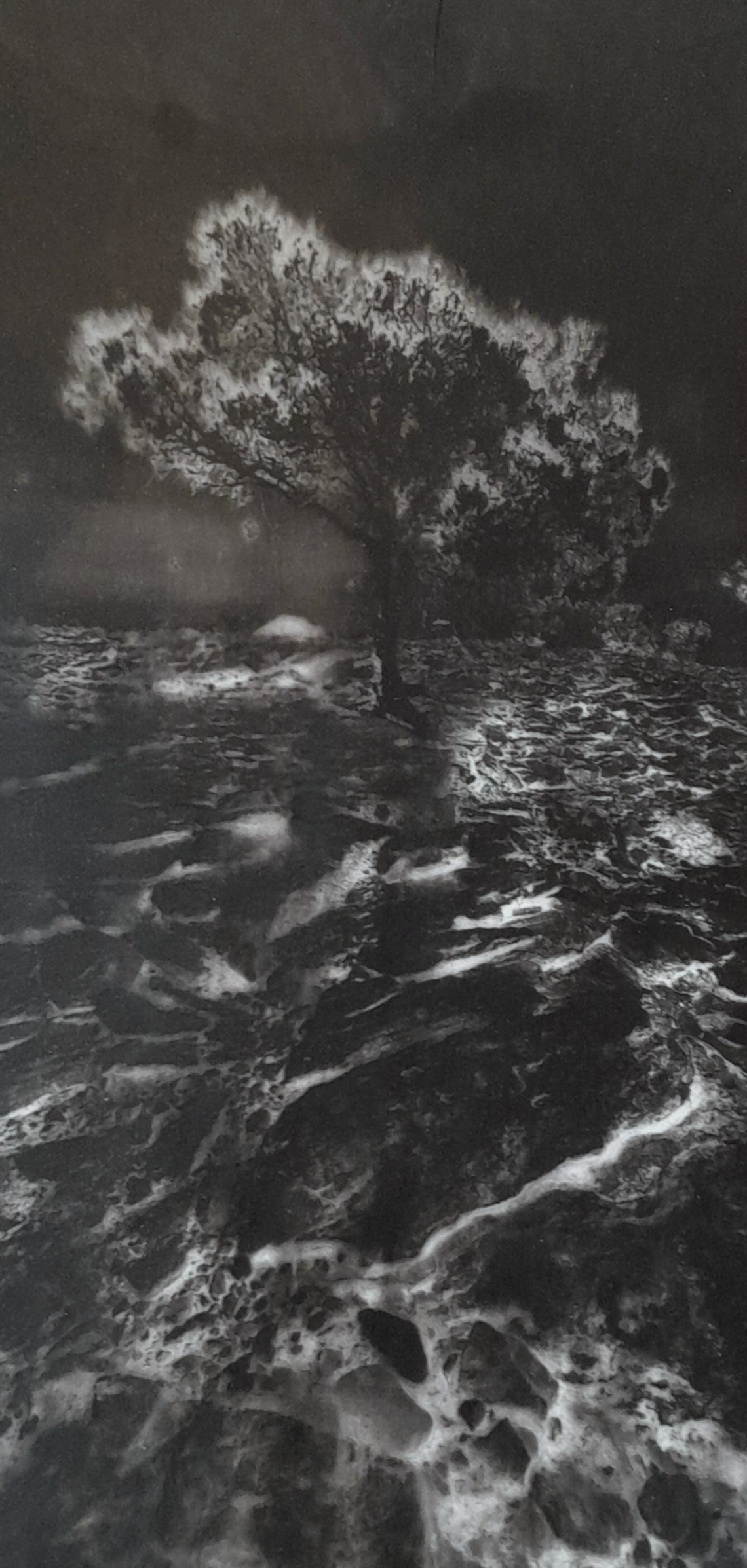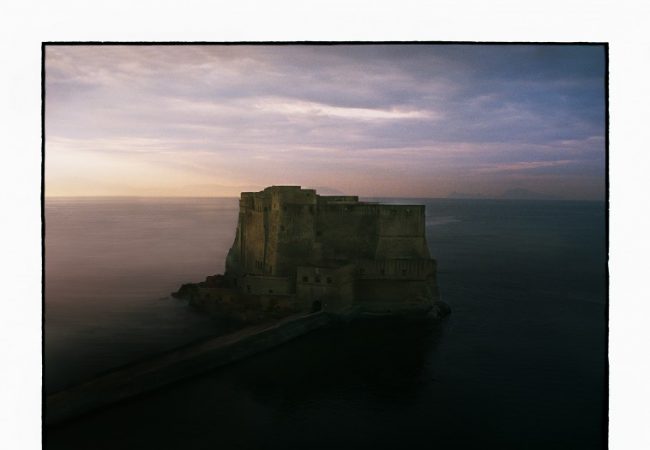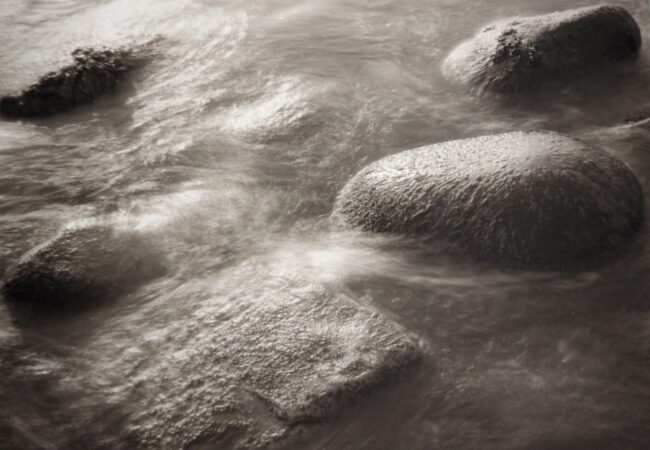
Exhibition: terrigenous (produced by the earth) – Graeme Armstrong
‘My aim was to produce photographs using Broken Hill minerals as the pigments in the carbon transfer process. The pigments were added to a photosensitive gelatine emulsion and tested to determine if they would produce an image.
Rocks were turned to pigment by crushing, grinding and sieving to less than 100 micrometer particle size before adding to the emulsion.
Initial results failed due to many minerals not having enough density to hold an image. But success was found with the iron oxides, schists and mixtures of these with Galena and slag from the heap. A fitting pigment for the ore that made Broken Hill.
Some images expose their origin; being rough to the touch. Incredibly, testing revealed that a tonal range similar to silver photographs and commercial dyes is possible. And they will retain their colour for thousands of years, just as the images created by our ancestors have done in caves across the world.’ Graeme Armstrong
Photograph above: Graeme Armstrong: galena and magnetite waves, Carbon transfer process with Broken Hill mineral pigments on gelatin emulsion.
Broken Hill City Art Gallery. 9 August – 27 October 2024



